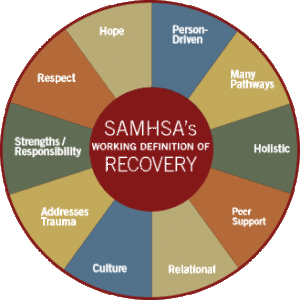Don’t Let Perimenopausal Fatigue Keep You Down
Don’t Let Perimenopausal Fatigue Keep You Down
 Stretching Away Those Pre Menopause Symptoms
Stretching Away Those Pre Menopause Symptoms
In today’s day and age of connectivity and constant stress, many women are looking for a simple way to get menopausal relief and attune themselves more acutely with their bodies. A growing trend, especially for menopausal women, is to find this lost connection with the self by engaging in Yoga. While many women have heard of Yoga, very few know what it is, or more importantly, what it can do for women during their age of menopause.
What is Yoga?
Put simply, Yoga is a way of life. While there are some that believe Yoga is a religion, they are incorrect in that assumption. There are eight “limbs,” or steps to Yoga, but in Western Culture the two that draw the most attention are body postures, or Asanas and breathing exercises, or Pranayama. The following is a list of the remaining eight limbs.
1. Universal Morality – Yama
2. Personal Observances – Niyama
3. Control of the Senses – Pratyahara
4. Concentrating and Cultivating Awareness – Dharana
5. Devotion and Meditation – Dhyana
6. Union or Harmony – Samadhi
What Can Yoga Do?
The goal of Yoga is to provide practitioners a path to unity and self-awareness. However, Yoga also provides many people, again especially perimenopausal women, with the ability to reconnect with their bodies and provide physical activity that many have lost since their earlier years. In addition, women experiencing pre menopause symptoms will find that by slowing down and taking the time to “listen” to their bodies, they can develop a greater appreciation for the changes that are taking place within. In turn, this appreciation can help foster a more successful transition. Furthermore, the obvious benefits, increased limberness, and decreased mood swings for example, can translate into more fulfilling physical experiences in one’s life.
How Does One Get Started?
There are a number of ways for anyone interested to start experiencing the benefits of Yoga. The following highlights two key ways:
1. Enroll in a Class – There any many Yoga studios across the country as well as countless classes offered at local gyms. Often times throughout the year gyms and studios will offer promotional deals that will provide a free session, allowing those that are unsure the ability to try a class before committing financially. By enrolling in a class you can feed off the energy in the room and meet new people. When enrolling in a class, be sure the instructor has at least 200 hours of training.
2. Buy a Book or DVD – Purchasing an at home Yoga aid is a great way for beginners to get comfortable with the art. Allowing the interested party the ability to find their center at home and away from the stress of a public class can help build confidence and often times will lead to enrollment in a local group.
The benefits of Yoga for perimenopausal women are numerous. Key among the benefits is the menopausal relief you will appreciate in today’s fast-paced world. By practicing Yoga, women will find menopausal support despite the frustrating growing pains associated with their path to becoming a new woman.…







 Have you ever had that feeling of tiredness that nothing seemed to help? The kind of fatigue that sleeping late, vacationing, and even quiet time alone just doesn’t eradicate? Well, you’re not alone. Many single moms, describe symptoms such as:
Have you ever had that feeling of tiredness that nothing seemed to help? The kind of fatigue that sleeping late, vacationing, and even quiet time alone just doesn’t eradicate? Well, you’re not alone. Many single moms, describe symptoms such as: We all know that bearing products can be made of various materials. And among all the different kinds, the ceramics have special features. They show some practical advantages over traditional bearing steels when they are used as materials for rolling contact bearing components. The properties of ceramics, specifically low density and high stiffness, are important features as to gas turbine and machine tools. High hardness, low coefficient of thermal expansion and high temperature capability are properties also suited to rolling element materials.
We all know that bearing products can be made of various materials. And among all the different kinds, the ceramics have special features. They show some practical advantages over traditional bearing steels when they are used as materials for rolling contact bearing components. The properties of ceramics, specifically low density and high stiffness, are important features as to gas turbine and machine tools. High hardness, low coefficient of thermal expansion and high temperature capability are properties also suited to rolling element materials. Treating Fibromyalgia can be quite a challenge. Not everyone who has fibromyalgia does well with every treatment available. Fibromyalgia treatments usually depend on how symptomatic you are or become.
Treating Fibromyalgia can be quite a challenge. Not everyone who has fibromyalgia does well with every treatment available. Fibromyalgia treatments usually depend on how symptomatic you are or become. Now those three words “constant fatigue and tiredness” are certainly familiar terms if you’re a shift worker. Actually let’s not beat around the bush here – they’re really our worst enemy as we’re in constant battle to overcome fatigue and tiredness.
Now those three words “constant fatigue and tiredness” are certainly familiar terms if you’re a shift worker. Actually let’s not beat around the bush here – they’re really our worst enemy as we’re in constant battle to overcome fatigue and tiredness. The endocrine system is a delicate arrangement of glands and endocrine related organs that happens to be one of the body’s primary systems for communicating, coordinating, and controlling its balance and function. It does this through the production of hormones which are chemical messengers released by cells and organs.
The endocrine system is a delicate arrangement of glands and endocrine related organs that happens to be one of the body’s primary systems for communicating, coordinating, and controlling its balance and function. It does this through the production of hormones which are chemical messengers released by cells and organs. Do you get enough sleep? Is it restless or restful? Continuous or interrupted? Do you have difficulty falling asleep, staying asleep, or wake up feeling tired? The latest research shows that there is a stronger connection than previously thought between quality and amount of sleep and a person’s health. However, many adults report having trouble sleeping at least once a week, and 10% of the US population suffers from insomnia most every night.
Do you get enough sleep? Is it restless or restful? Continuous or interrupted? Do you have difficulty falling asleep, staying asleep, or wake up feeling tired? The latest research shows that there is a stronger connection than previously thought between quality and amount of sleep and a person’s health. However, many adults report having trouble sleeping at least once a week, and 10% of the US population suffers from insomnia most every night.